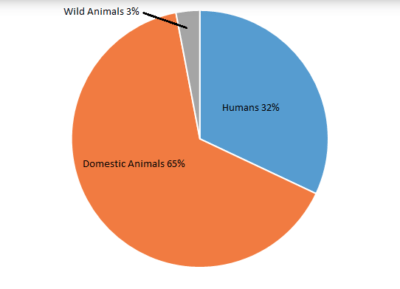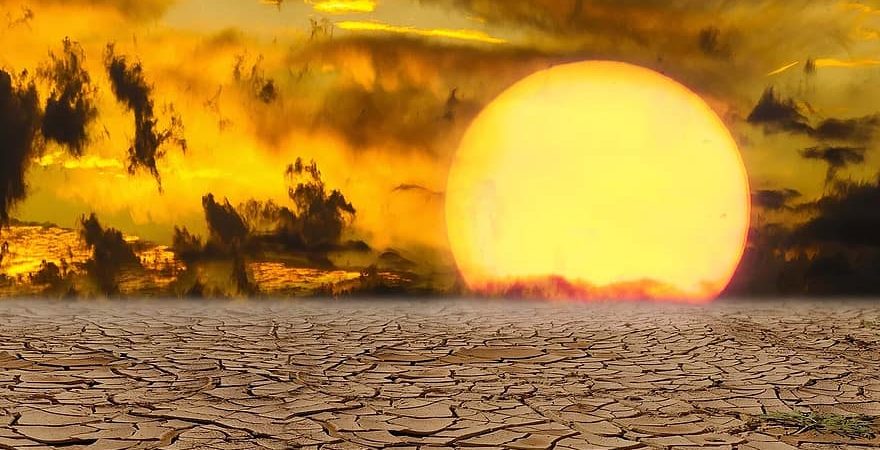It is helpful when considering controversial topics to be appraised by the human psychological dynamic known as ‘confirmation bias.’ A sense of being knowledgeable about the world is important to every human being’s “self-image”, and because of that most of us do not see the world as it is, but rather as we imagine it to be. Francis Bacon wrote about this in 1620: “The human understanding when it has once adopted an opinion draws all things else to support and agree with it.” Bacon noted that philosophy and the sciences do not escape this tendency (1).
The Earth’s climate is never completely stable. A graph of temperature change over time typically looks like the blade of a wood saw, constantly changing. It is one of the great religious desires of humanity that the Earth be unchanging. Before Darwin’s insight into the evolutionary nature of life, the dominant Christian belief was that a god had made the world, including all the animal and plant species, just as they exist today. The opposite turns out to be; 99% of all species that have ever lived are now extinct because the world and its climate change constantly (2).
When considering climate dynamics today it should be understood that for most of the 4.5 billion year history of the Earth there was no ice at the poles, nor anywhere else on the planet. Ice began to form in Antarctica 30 million years ago, and in the Arctic 3 million years ago. On the other hand, there was more ice in North America during the last glacial age (peaking 20,000 years ago) than there is in Antarctica today. For most of the Earth’s history, the overall climate has been much warmer (by 10-15ºF) than it is today. It has also been much colder than today (3).
A clever process called photosynthesis
Any discussion of the dangers of too much carbon dioxide in the atmosphere should include the information that the biosphere—all life—is primarily composed of carbon dioxide (4). This is a strange fact, but it is a fact. Photosynthetic organisms—plants, algae, and cyanobacteria—acquire carbon dioxide from the atmosphere (where it exists in small amounts measured in parts per million), and acquire hydrogen by splitting water apart using energy arriving from the Sun. The hydrogen is then combined with carbon dioxide to form the sugar glucose, the formula for which is C6H12O6. The oxygen split from the water molecule is released to the atmosphere, not as a “waste product”, but as a powerfully reactive atom that will in time react with the hydrocarbon molecules fabricated during photosynthesis to release the solar energy stored in that molecule when it formed. It’s a package deal. The process is a unitary system. Most people do not know this; here is a short video of graduates of MIT and Harvard opining that plant biomass is made of ‘dirt’: https://youtu.be/JhCHb6xtqeY.
The Earth has warmed about 1.8º F over the past 100 years, in large part due to greenhouse gases produced by human activity and emitted into the atmosphere (5). To limit these gas emissions, both the size and the energy consumption of the human population would have to be addressed. The global population is growing by about 80 million people a year; that’s 200,000 more humans per day, 140 per minute (6). All of these additional people will require energy from the biosphere to make lives for themselves. This daily increase is in addition to the global population today of 7.8 billion. Any serious effort to address the human-induced increase in greenhouse gases in the atmosphere will have to address the current and increasing size of the human population. Also, energy consumption across humanity is highly variable, with for example Americans using about 35 times more energy daily than people in India (7).
Modern agriculture is a means of turning oil into food – David Pimentel
So-called renewable energy such as solar panels and wind currently supply about 1% of the global consumption of 20 billion tons of oil equivalent per year. Renewable energy is vastly less energy-dense than fossil fuels, up to 1000 times less dense (8). This means that to transition to these renewable forms of energy humanity would have to use 1000 times less energy than used today to maintain human society as we know it, which is not possible. To cite just one issue, as David Pimentel has noted, “Modern agriculture is a means of turning oil into food”. (Graphics often show 4% of global energy being supplied by renewables, but most of that is hydropower, which is limited in supply and comes with its own high costs.)
Note that while considerable human effort is expended on addressing climate change, most of the damage done to the biosphere by humanity is unrelated to climate. For example, it is estimated that of the existing terrestrial biomass of vertebrates on Earth, 97% consists of humans and their livestock; the other 3% being the Earth’s remaining terrestrial wildlife (9).

The biosphere is being destroyed and this has nothing to do with climate change. It has everything to do with the dynamic elucidated by ecologist Paul Ehrlich 50 years ago, I=PAT, impact equals population times affluence times technology. To decrease the impact on any aspect of the biosphere, including the atmosphere, it is necessary to reduce the human population or consumption rates, or both.
IPAT revisited
I recommend adding one more variable to Ehrlich’s formula, W, for war. Contrary to what some might think, war does not reduce the population but simply impoverishes people, leading to lives of desperation and higher birth rates. In 2019 the world spent 2 trillion dollars on its combined military establishment, with the United States accounting for 40% of that amount (10). These expenditures are not just resources lost to constructive purposes, they are used to destroy portions of the Earth’s biosphere and cause death, pain, and poverty in the afflicted areas. The United States, for example, the most militarized nation on the planet, is currently dropping bombs in at least seven different countries (Afghanistan, Iraq, Libya, Niger, Somalia, Sudan, and Syria (and Yemen by proxy). Those are just the people and ecosystems being ravaged today; the list extends far back through time. “The United States”, said former president Jimmy Carter in 2019, “is the most warlike nation in the history of the world.”
What is needed now is a body of people who are psychologically and emotionally invested in ecological integrity, such that one progressively learns to live ecologically and simply refuses to participate in or support the destructive actions of their national government (including not paying for nuclear weapons). This emotional investment can be characterized as “love of life”, “compassion”, “biophilia”, or “the biological sciences”.
Someone asked me what the new administration can do to encourage this trajectory; for better and for worse the answer is it is all up to you and how you live your one wild and precious life.
References
- https://www.semanticscholar.org/paper/Confirmation-Bias%3A-A-Ubiquitous-Phenomenon-in-Many Nickerson/70c93e5e38a8176590f69c0491fd63ab2a9e67c4?p2df
- https://www.discovery.com/nature/99-Percent-Of-The-Earths-Species-Are-Extinct
- https://www.climate.gov/news-features/climate-qa/whats-hottest-earths-ever-been
- https://www.nrs.fs.fed.us/pubs/jrnl/2007/nrs_2007_smith-k_002.pdf
- https://climate.nasa.gov/climate_resources/139/video-global-warming-from-1880-to-2019/6. https://www.history.com/news/how-fast-is-the-worlds-population-growing
- https://www.npr.org/sections/goatsandsoda/2015/12/08/458917881/india-to-u-s-cut-back-on-your-consumption
- https://www.drexel.edu/~/media/Files/greatworks/pdf_sum10/WK8_Layton_EnergyDensities.ashx#:~:text=The%20energy%20density%20of%20oil,quadrillion%20times%20less%20than%20oil. Also: https://www.sciencemag.org/news/2018/03/meet-vaclav-smil-man-who-has-quietly-shaped-how-world thinks-about-energy
- Harvesting the Biosphere: What We Have Taken from Nature By Vaclav Smil pg 22. Also: http://vaclavsmil.com/wp-content/uploads/PDR37-4.Smil_.pgs613-636.pdf andAlso: https://cassandralegacy.blogspot.com/2017/09/the-elephant-skin-table-reminder-of.html
- https://www.sipri.org/media/press-release/2020/global-military-expenditure-sees-largest-annual-increase decade-says-sipri-reaching-1917-billion
Dana Visalli is a professional botanist and organic farmer in Washington State. He has lived off-grid for the past 20 years, has traveled to Afghanistan and Iraq as a pro-sanity activist, and finds using his composting toilet to be a ‘deep ecology’ moment. His web page is www.methownaturalist.com
The MAHB Blog is a venture of the Millennium Alliance for Humanity and the Biosphere. Questions should be directed to joan@mahbonline.org

